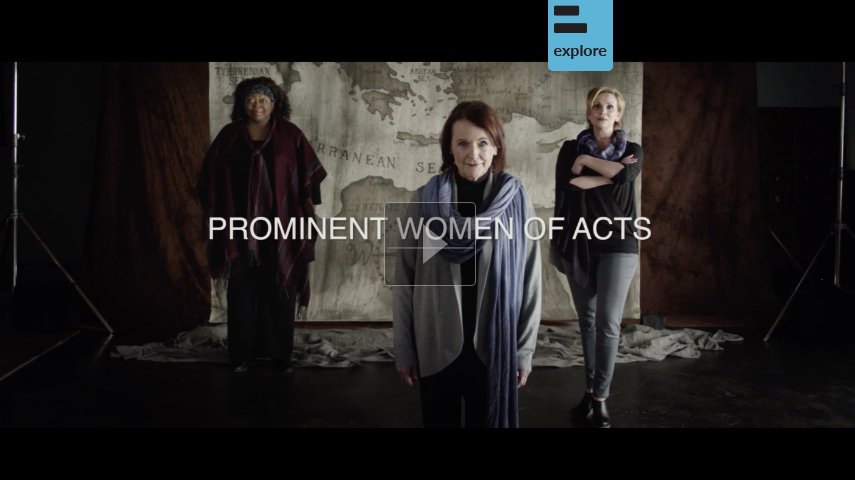This video is part of a series of created as an Exploration of Scripture to empower the viewer' Faith.
A fascinating behind the scenes study of the people and stories that are the bedrock of the Christian faith. Ancient stories that still echo with deep significance for today's world through eyewitness accounts.

PROMINENT WOMEN OF ACTS
A Narrated Portrayal of Gospel Characters
JAMES THE APOSTLE
JAMES SON OF ZEBEDEE
JAMES THE APOSTLE Luke builds his Gospel by showing how Jesus calls his twelve apostles and then trains them. This training takes the form of spending time with Jesus, watching him do miracles and healings, and listening to his teachings. By Luke 9, the basic training is over and advanced training has started. Jesus empowers the apostles and gives them authority to drive out demons and cure people, and to teach about the Kingdom of God.
MARY MAGDALENE IN LUKE
Mary Magdalene
MARY MAGDALENE Over the centuries, many people have observed that Jesus was one of the first world leaders concerned with women’s rights. When it came to women, Jesus wasn’t as concerned with the day-to-day societal norms as he was with their worth. In many ancient societies, including the time when Jesus was born, women were considered property, with worth far below that of men—the Roman Empire even codified this in their laws. It was only during the following decades that women started receiving more legal rights.
THE MOST THANKFUL ANGEL
AN ANGEL
THE MOST THANKFUL ANGEL This episode has a subtle twist. It assumes seven appearances of unnamed angels dealing directly with Jesus shown in the Gospels are all by the same angel (not including Gabriel’s appearances). Using that twist, the backstory of the angel and its thankfulness are part of the story line. The seven appearances are: To tell Joseph about Mary (Mat. 1:20-24). Announce the birth of Jesus (Luke 2:9-15). To tell Joseph to take Jesus to Egypt to avoid Herod’s wrath (Mat. 2:13-14). To tell Joseph to move from Egypt back to Israel (Matthew 2:19-23). To attend to Jesus after the wilderness temptations (Matthew 4:11). To strengthen Jesus at Gethsemane (Luke 22:43). To roll away the stone of Jesus’ tomb and inform the women (Matthew 28:2-5).







